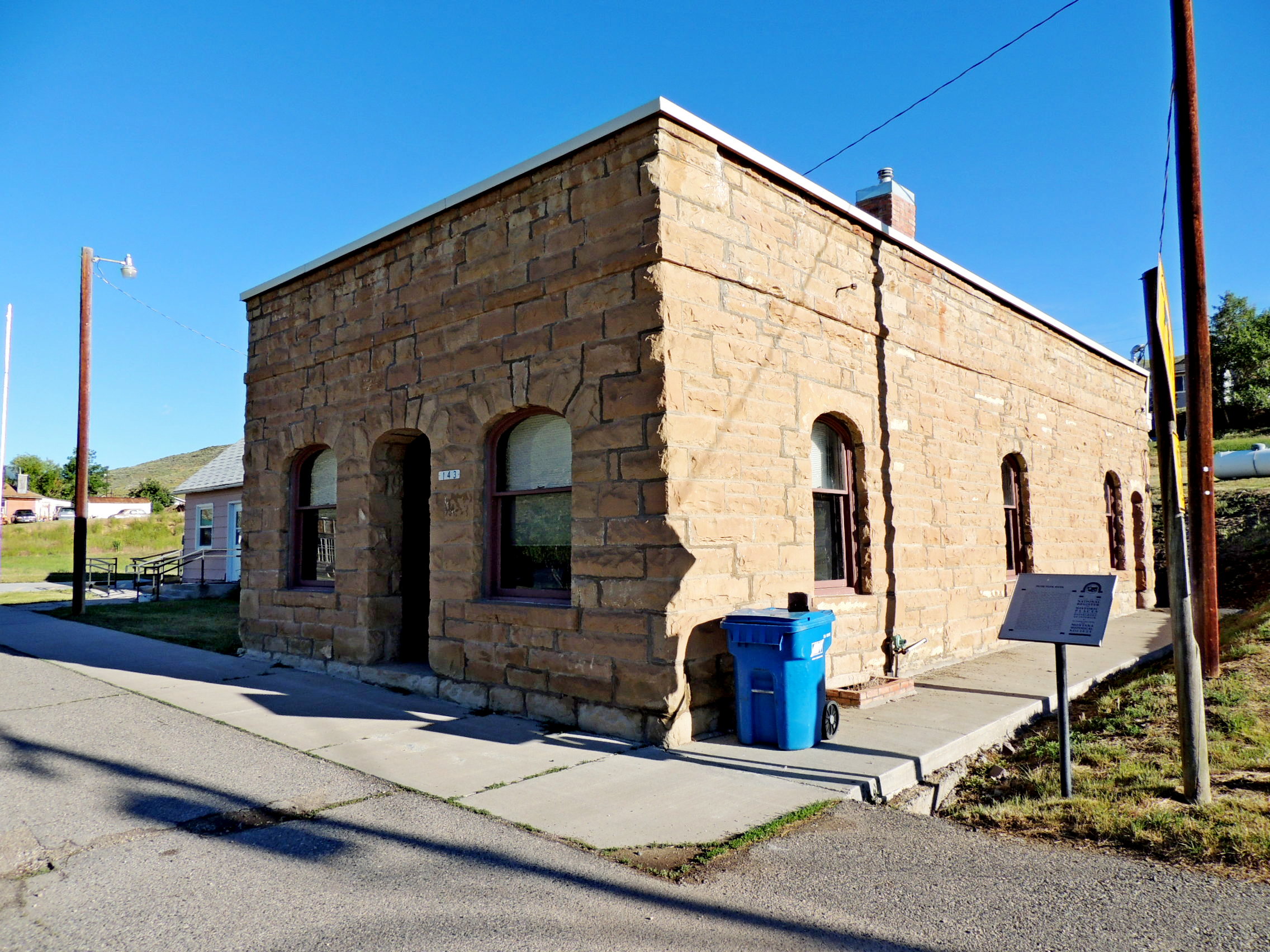|
 Bearcreek Bank - Bearcreek, MT Posted by:  T0SHEA T0SHEA
N 45° 09.657 W 109° 09.515
12T E 644724 N 5002480
The third smallest incorporated city in the State of Montana, one wouldn't expect Bearcreek to have had a great many banks - and it didn't.
Waymark Code: WMWW0K
Location: Montana, United States
Date Posted: 10/19/2017
Views: 0
Constructed in 1906, the one time Bearcreek Bank is one of the very few structures which remain in the hamlet, which for most of the first half of the twentieth century depended on the nearby Smith Creek Coal Mine for its livelihood. That all came crashing to an end with the Smith Mine disaster of 1943, a huge underground explosion which took the lives of 74 mine workers and one rescue worker. The disaster spelled the end for the mine, which never reopened, and essentially the end for Bearcreek.
Even before the explosion the town had been mostly dismantled and many of its buildings hauled to Bridger, Belfry and Red Lodge. The fortunes of coal mining in Montana had, since the end of World War I been on the downswing, except for those of larger strip mines in eastern Montana. If the 1943 explosion had not occurred, the days of the mine, then the last of four large mines in the Bearcreek area, were probably limited in any event. Most of those who still resided in Bearcreek by 1943 left for greener pastures, leaving just a handful of people and buildings.
The bank itself had long since failed, this occurring when the International Coal Company defaulted on a $170,000 loan in 1921. Opened as the Bearcreek Bank, it operated under that name until June 27, 1911 when the name was changed to the Clark - Wright Bank in Bearcreek. It continued in operation under that name until its failure in 1921. It was reopened in 1922 by former mine foreman Tom Frasure as the Miner’s State Bank, lasting until 1928, at which time it closed permanently. For some years after, the building housed a restaurant then, in 1967, was renovated to become the town hall for the little community of Bearcreek, which it remains today.
The village today, though far from thriving, refuses to die.
BEARCREEK BANK
A coal-mining town established in 1905, Bearcreek developed quickly, and after just one year the town boasted telephones, city water, and electric streetlights. Bert Vaill, a cashier with the Carbon County Bank of Red Lodge, purchased this lot from the townsite company for $800, and in 1906 he hired John Russell to construct a one-story Romanesque style bank from native sandstone quarried just north of town. Symbolizing Vaill’s faith in Bearcreek’s future, the bank’s thick stone walls were also meant to assure customers that their money was safe from theft and bank failure, a tenuous assumption in the days before Federal Deposit Insurance. Part of a vibrant commercial district, the bank—owned for a time by Butte copper magnate William A. Clark—played a significant role in Bearcreek’s development through loans and investments. It also provided currency exchange for the community’s immigrant miners. When the International Coal Company defaulted on a $170,000 loan in 1921, the bank went into receivership. Former mine foreman Tom Frasure purchased the property and reopened the bank under the name Miner’s State Bank in 1922. In 1928 it, too, closed. The building then housed a restaurant until 1943. That year an explosion at the Smith Mine killed 74 miners. The disaster started an exodus from Bearcreek, causing the restaurant and many other businesses to close. Used for storage, the building was rehabilitated in 1967 for use as the Bearcreek City Hall, a function it has served ever since.
From the NRHP plaque at the building
Street address:
143 Main Street
Bearcreek, MT United States
59007

County / Borough / Parish: Carbon County

Year listed: 2004

Historic (Areas of) Significance: Commerce, Politics/Government

Periods of significance: 1925-1949, 1900-1924

Historic function: Commerce/Trade - Financial Institution

Current function: Government - City Hall

Privately owned?: no

Primary Web Site: [Web Link]

Secondary Website 1: [Web Link]

Season start / Season finish: Not listed

Hours of operation: Not listed

Secondary Website 2: Not listed

National Historic Landmark Link: Not listed

|
Visit Instructions:
Please give the date and brief account of your visit. Include any additional observations or information that you may have, particularly about the current condition of the site. Additional photos are highly encouraged, but not mandatory.
Recent Visits/Logs:
| There are no logs for this waymark yet. |
|
|
|
|